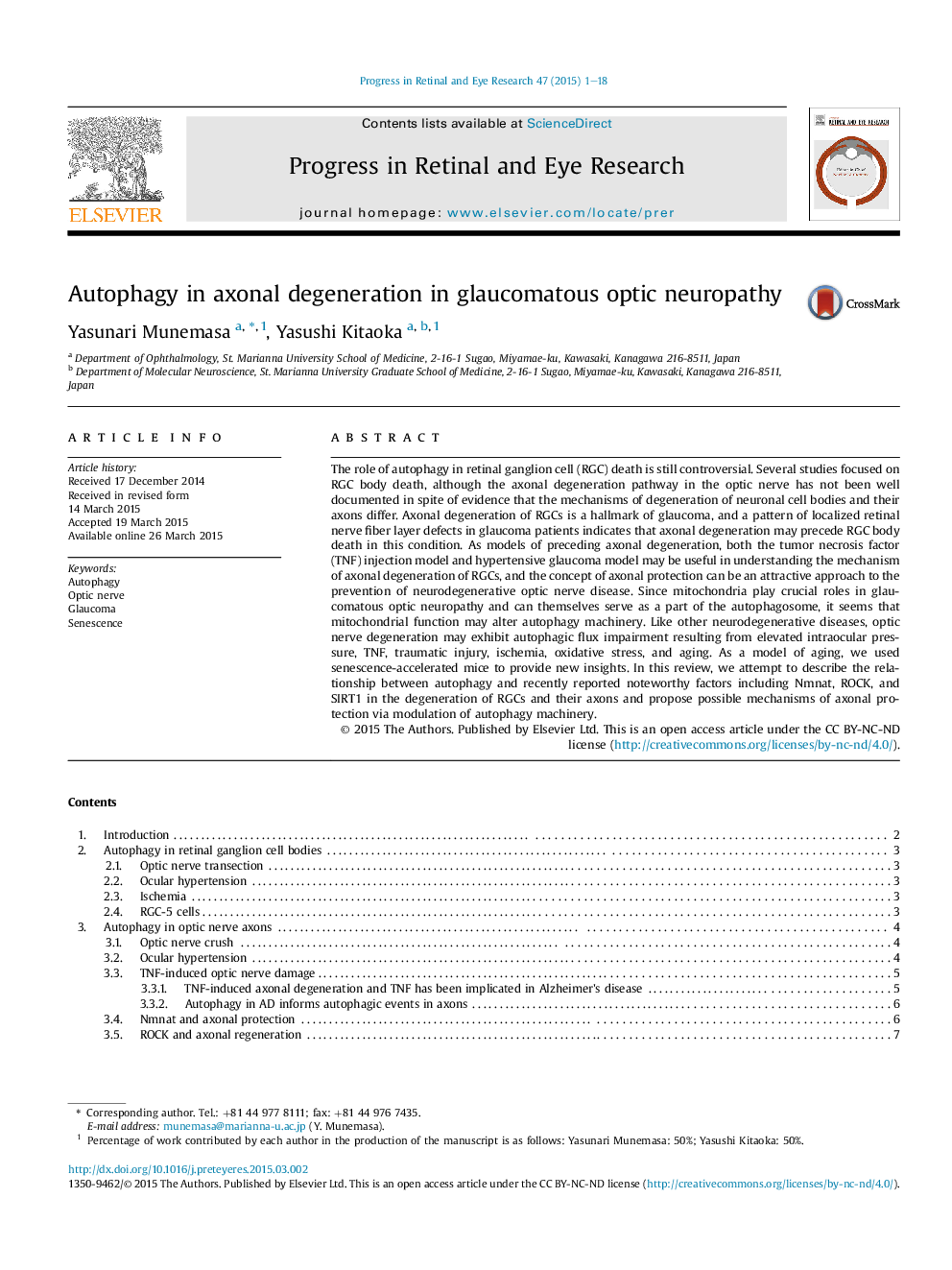| Article ID | Journal | Published Year | Pages | File Type |
|---|---|---|---|---|
| 6202702 | Progress in Retinal and Eye Research | 2015 | 18 Pages |
â¢We provide new insight into the involvement of autophagy machinery in glaucomatous optic neuropathy.â¢Senescence-accelerated mice were used as a new animal model of RGC degeneration.â¢The results in this model showed that a decrease in Sirt1 and autophagic flux impairment led to age-related axonal degeneration.â¢The modulation of autophagic flux could be a target for the treatment of glaucomatous optic neuropathy.
The role of autophagy in retinal ganglion cell (RGC) death is still controversial. Several studies focused on RGC body death, although the axonal degeneration pathway in the optic nerve has not been well documented in spite of evidence that the mechanisms of degeneration of neuronal cell bodies and their axons differ. Axonal degeneration of RGCs is a hallmark of glaucoma, and a pattern of localized retinal nerve fiber layer defects in glaucoma patients indicates that axonal degeneration may precede RGC body death in this condition. As models of preceding axonal degeneration, both the tumor necrosis factor (TNF) injection model and hypertensive glaucoma model may be useful in understanding the mechanism of axonal degeneration of RGCs, and the concept of axonal protection can be an attractive approach to the prevention of neurodegenerative optic nerve disease. Since mitochondria play crucial roles in glaucomatous optic neuropathy and can themselves serve as a part of the autophagosome, it seems that mitochondrial function may alter autophagy machinery. Like other neurodegenerative diseases, optic nerve degeneration may exhibit autophagic flux impairment resulting from elevated intraocular pressure, TNF, traumatic injury, ischemia, oxidative stress, and aging. As a model of aging, we used senescence-accelerated mice to provide new insights. In this review, we attempt to describe the relationship between autophagy and recently reported noteworthy factors including Nmnat, ROCK, and SIRT1 in the degeneration of RGCs and their axons and propose possible mechanisms of axonal protection via modulation of autophagy machinery.
